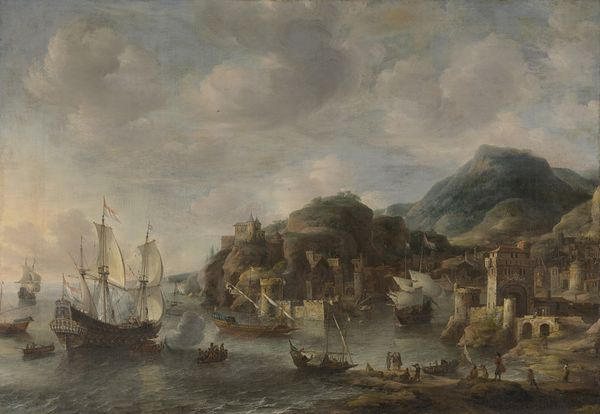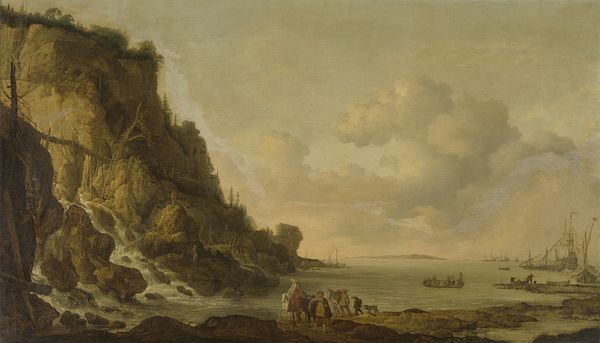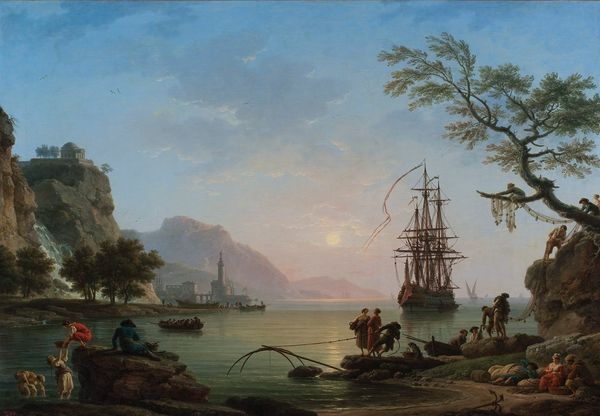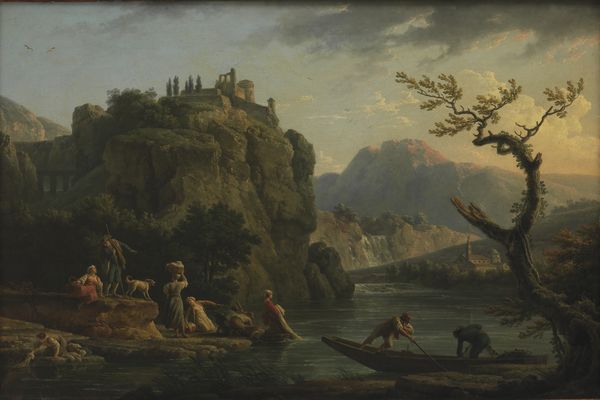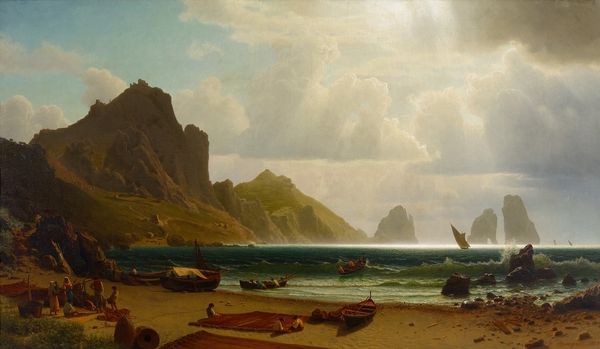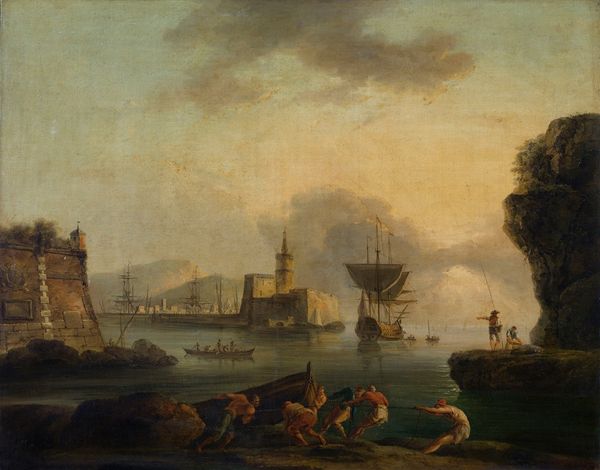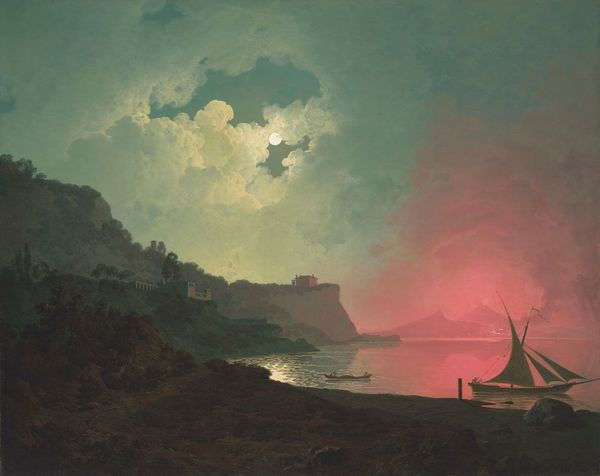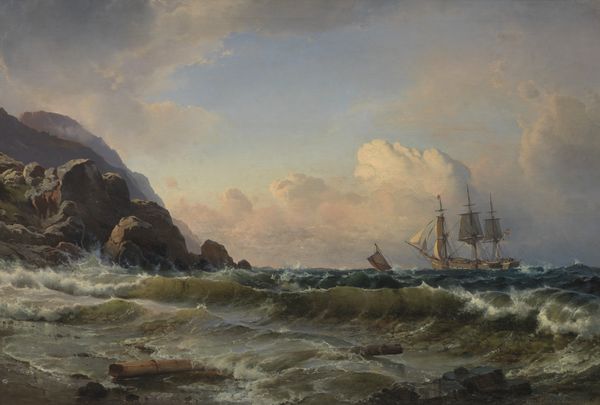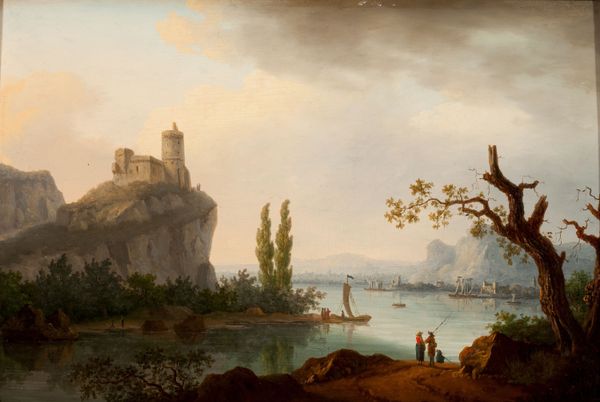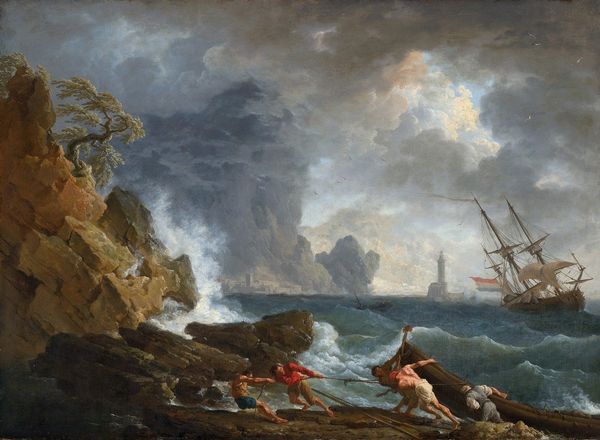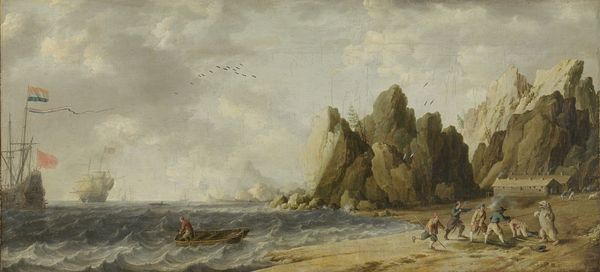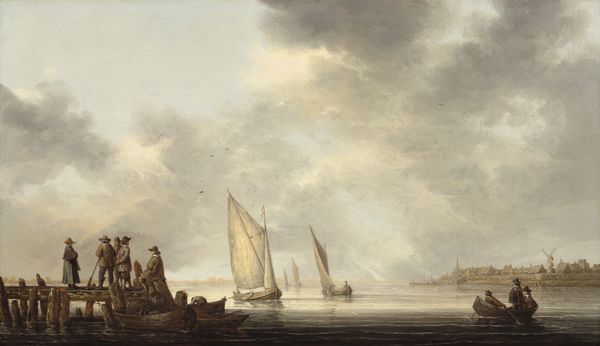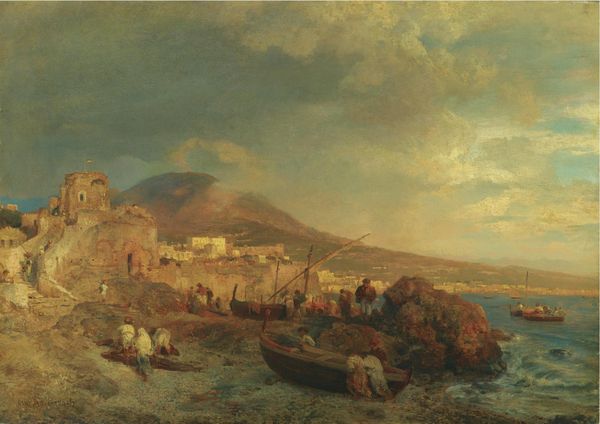
plein-air, oil-paint
#
baroque
#
plein-air
#
oil-paint
#
landscape
#
oil painting
#
cityscape
#
history-painting
Copyright: Public domain
Editor: This is "Morning In Castellemmare," attributed to Claude-Joseph Vernet, created with oil paint. It evokes a very serene mood, with the soft, golden light illuminating the landscape. The composition is lovely. What aspects of the painting capture your attention? Curator: Immediately, my eye is drawn to the clear depiction of labor within this picturesque landscape. Consider the figures actively engaged in coastal work—loading, hauling, navigating boats. Vernet isn't just presenting a pretty scene. What processes went into the collection and processing of oil paint itself and how it mirrors in the laborious process depicted here. It speaks to the complex economic activities underpinning even the most seemingly tranquil moments. What do you think of the worn boats and the rough-hewn nature of this place? Editor: That’s a really interesting perspective! I hadn’t thought about the undercurrent of work. The boat does look rather weather-beaten, like a hard-working vessel rather than a pristine, decorative ship. Does the "plein-air" medium used to create this painting mean anything specific within this context? Curator: Precisely! The choice to paint en plein air is also significant, focusing on the physical act of transporting materials and producing art directly within this active coastal environment. "Plein-air" signifies an emphasis on materiality. The landscape presented shows the interweaving of industry and the picturesque that catered to aristocratic tastes in the Baroque era. Editor: So, by depicting both labor and the materiality of the artistic process itself, Vernet’s painting is far more complex than I initially perceived. Thanks! Curator: Indeed. It is about acknowledging the means of artistic and societal production, hidden beneath the surface.
Comments
No comments
Be the first to comment and join the conversation on the ultimate creative platform.
